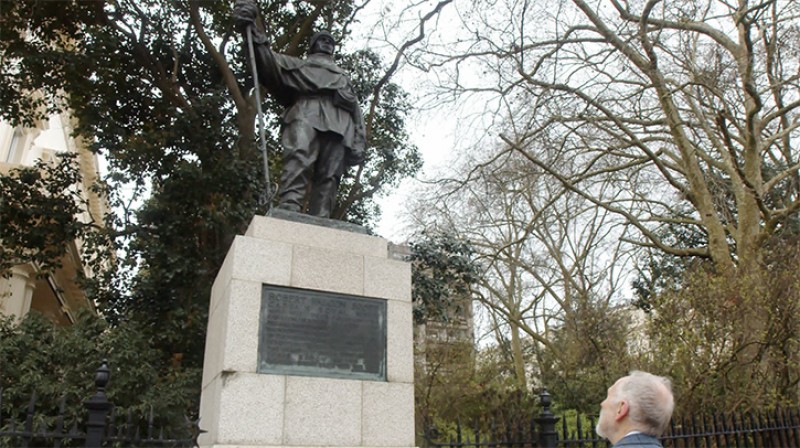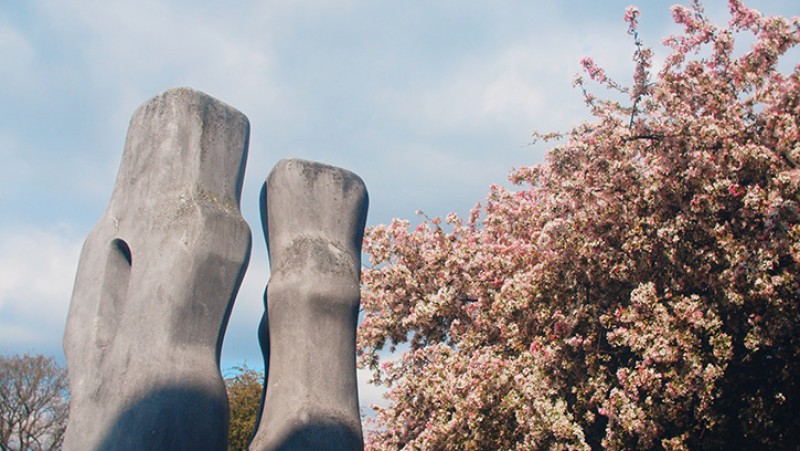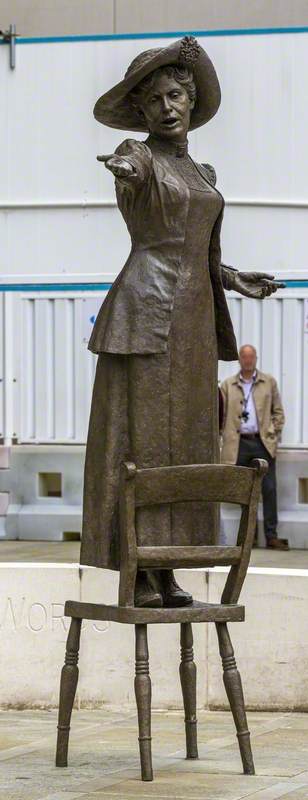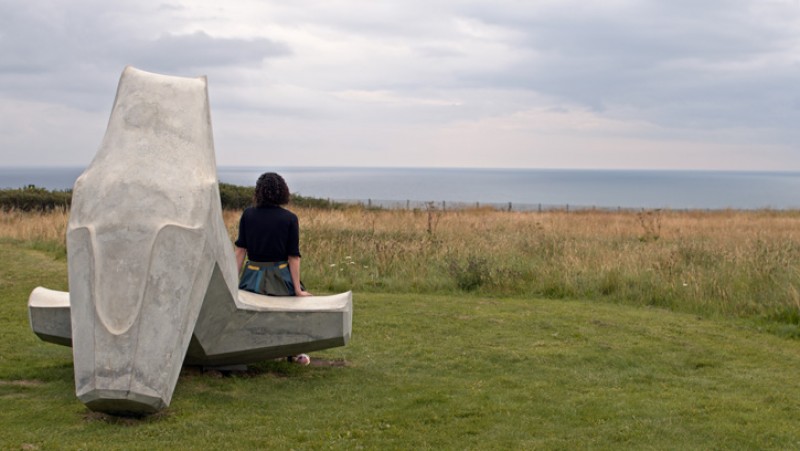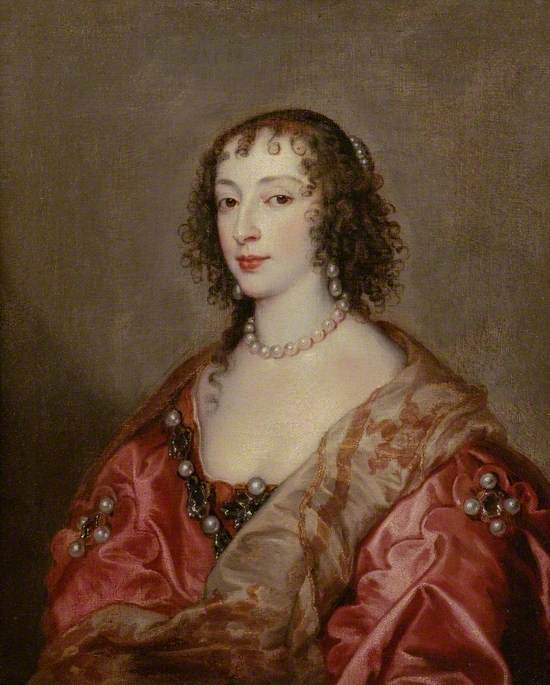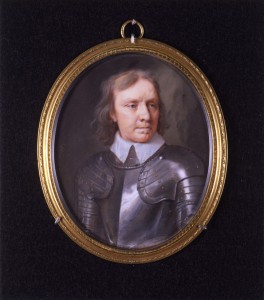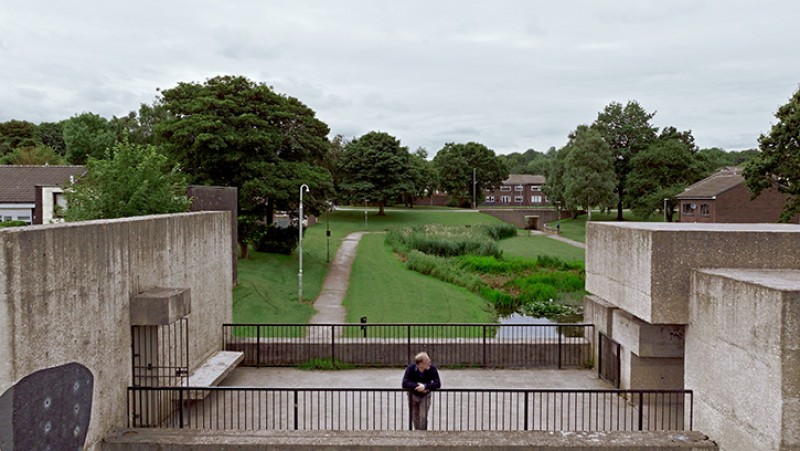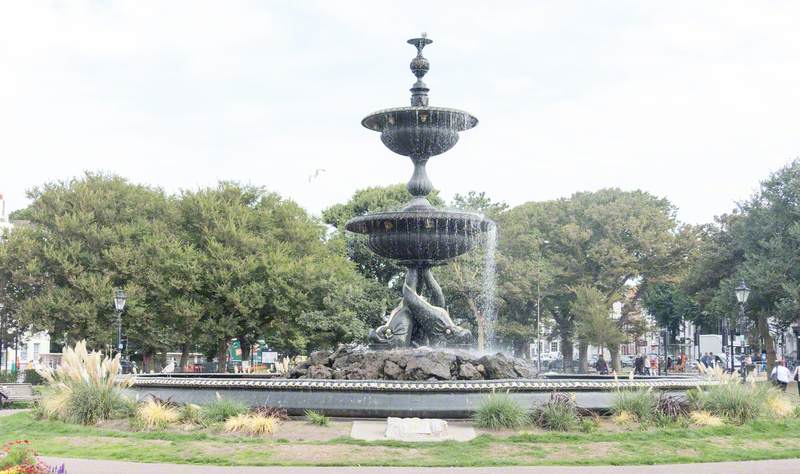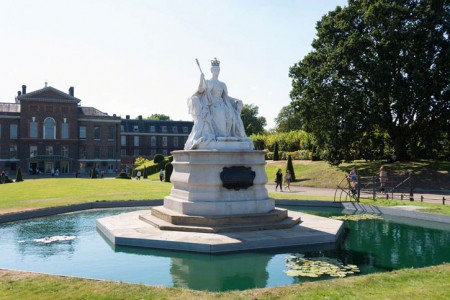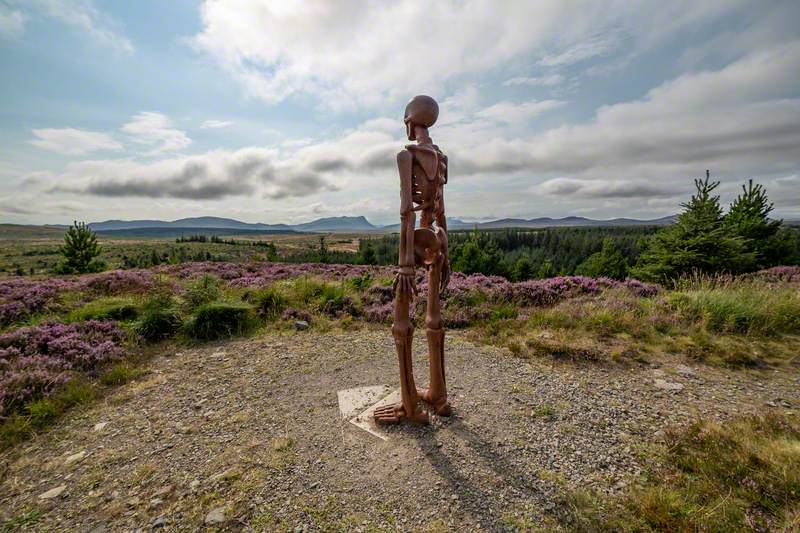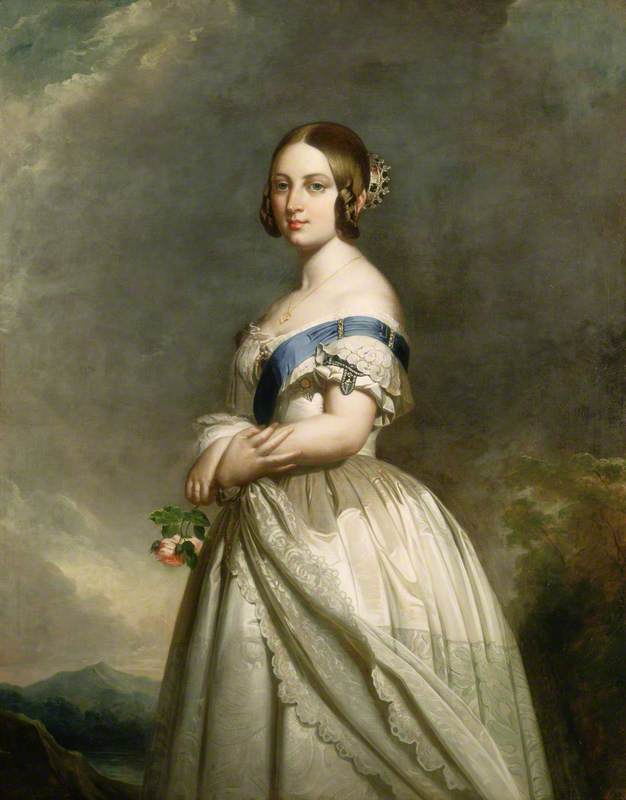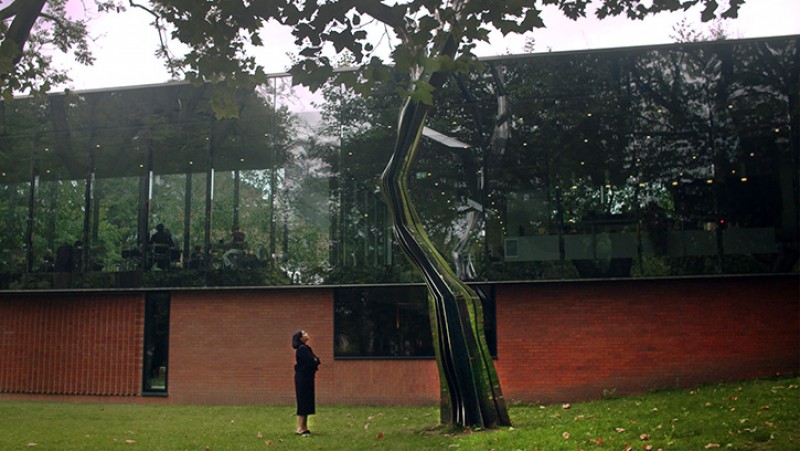Walking around London, it's still possible to see how the seventeenth century was a defining moment in British history – it was a period of intense political debate but also artistic brilliance. In the centre of the city, we find an equestrian statue of Charles I. It's London's oldest bronze sculpture and the subject of a new film by HENI Talks.
Charles I dissolved parliament in 1629, embarking on a so-called personal rule of the 1630s. And it was just at this time this sculpture was commissioned, created by Charles I's favourite sculptor, Hubert Le Sueur.
Still from HENI Talk's film on Trafalgar Square's equestrian statue of Charles I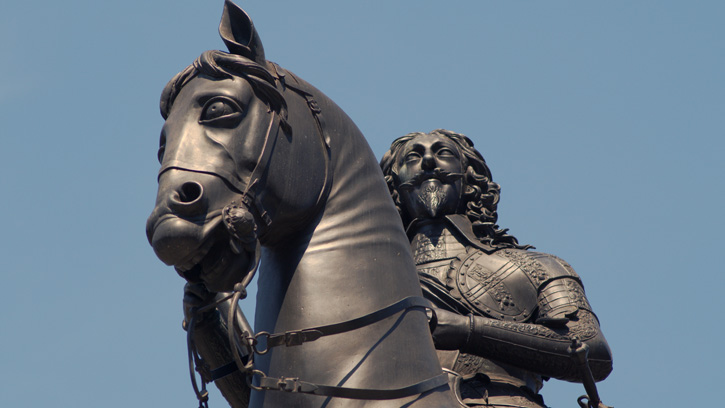
There's an intense focus on details and armour, even down to the rippling of the leather boots. But in contrast, the face has this almost mask-like quality, without individuality or detail. Why did Le Sueur choose to depict the king in this way?
The sculpture is not of a man, but a monarch: showing not inner life, but public life. He holds the horse with a light touch, yet in complete control. This powerful beast is in complete harmony with its master. The sculpture is saying, 'we don't need parliament. I'll rule with a deft hand'.
Charles I (1600–1649)
1630–1633 & 1674–1675
Hubert Le Sueur (c.1580–1658) and Joshua Marshall (active 17th C) and Christopher Wren (1632–1723) 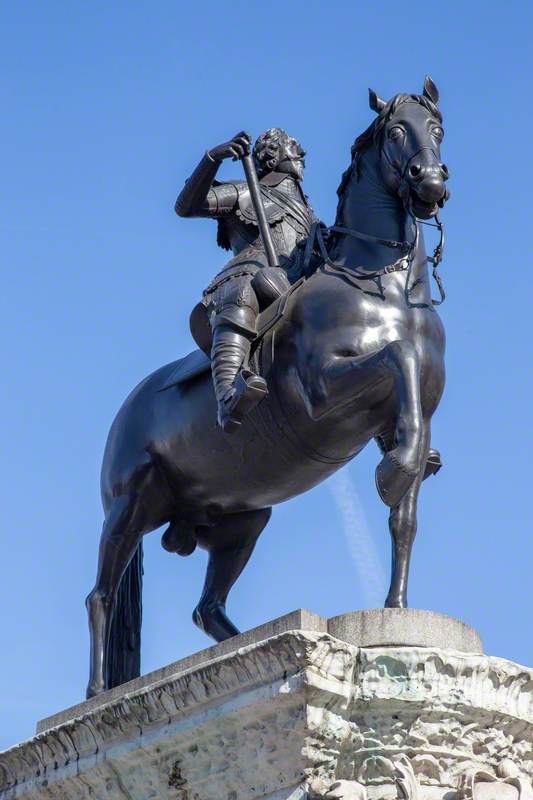
In the 1640s, the situation finally became untenable: accusations of popery and absolutism couldn't have been helped by this equestrian that ultimately derives from the famous ancient sculpture of Marcus Aurelius, a Roman emperor at the centre of the Catholic world in Rome (not an association Protestant England had in mind for its monarch). Civil war finally erupted in 1642. The sculpture was then ordered to be melted down for use as ammunition. Charles I was forced down from his throne and executed on 30th January 1649 outside the Whitehall Banqueting House.
Still from HENI Talk's film on Trafalgar Square's equestrian statue of Charles I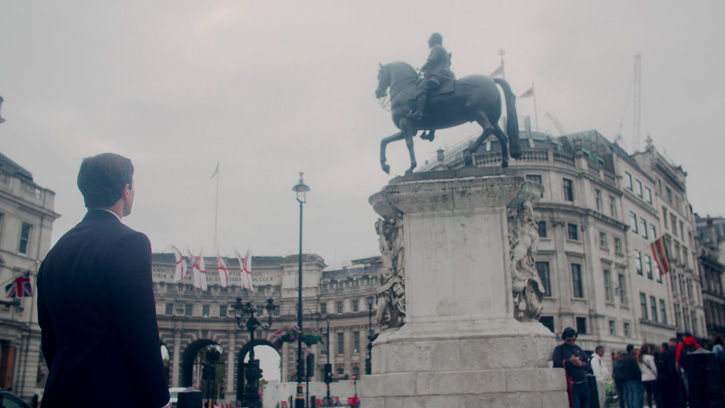
However, the statue survived: the man entrusted to destroy it hid it, and preserved it. With the restoration in 1660, Charles II acquired the sculpture and placed it intentionally in Trafalgar Square, where we can still see it today: Charles I looks directly down Whitehall to the place he was executed.
Charles I (1600–1649)
1630–1633 & 1674–1675
Hubert Le Sueur (c.1580–1658) and Joshua Marshall (active 17th C) and Christopher Wren (1632–1723) 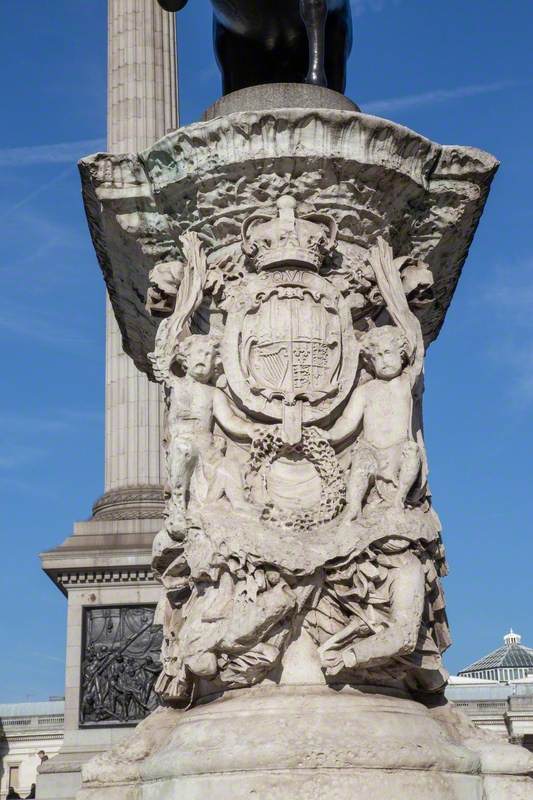
Charles II commissioned a new plinth and had Joshua Marshall carve a wonderful high relief of the Stewart coat of arms, flanked by two putti holding pond leaves representing the martyrdom of Charles I. We see the victory wreath held by the two putti, because it was not just a restoration, but a resurrection.
Timothy Revell, art historian
Subscribe to the HENI Talks YouTube channel to be the first to know about new film releases
